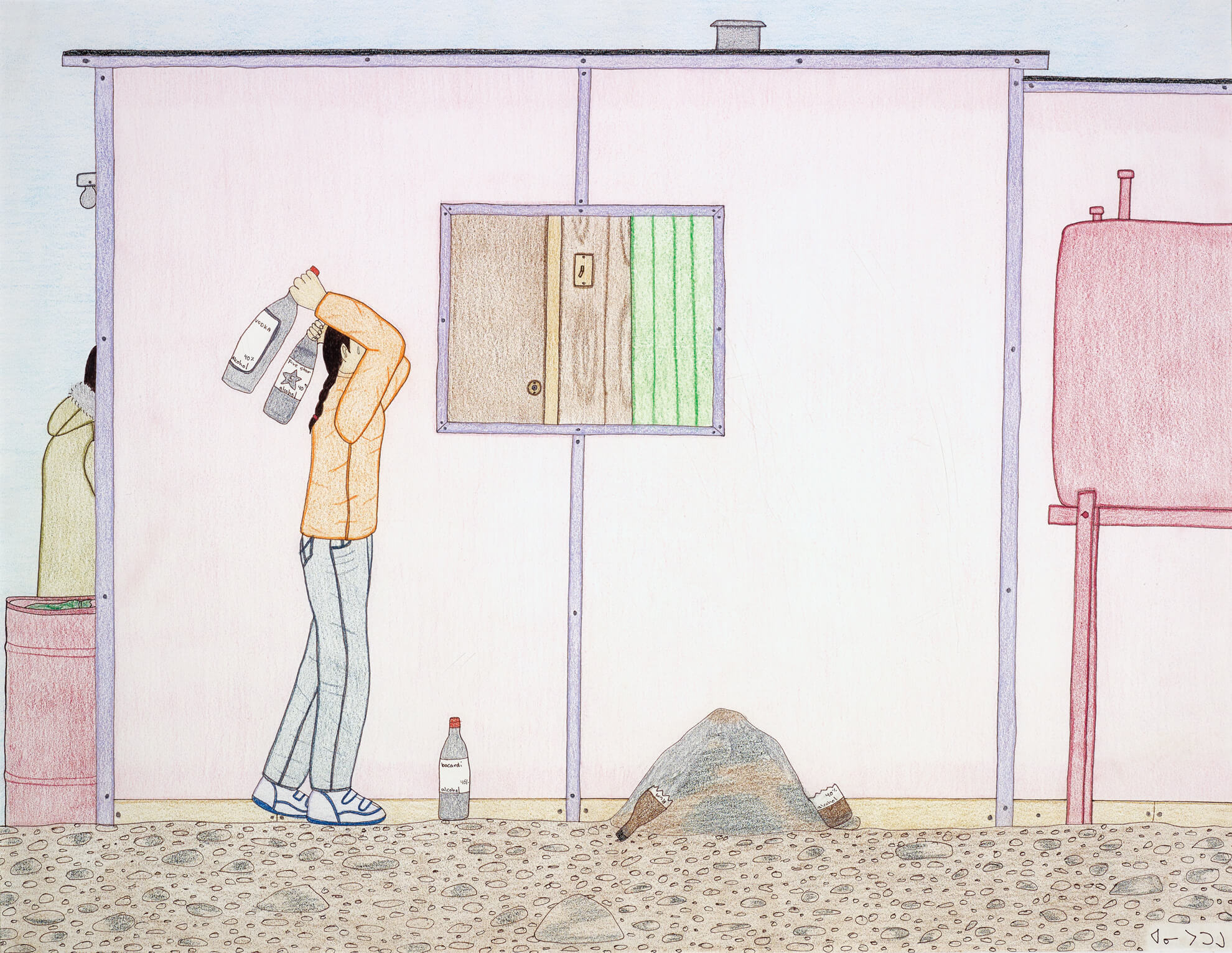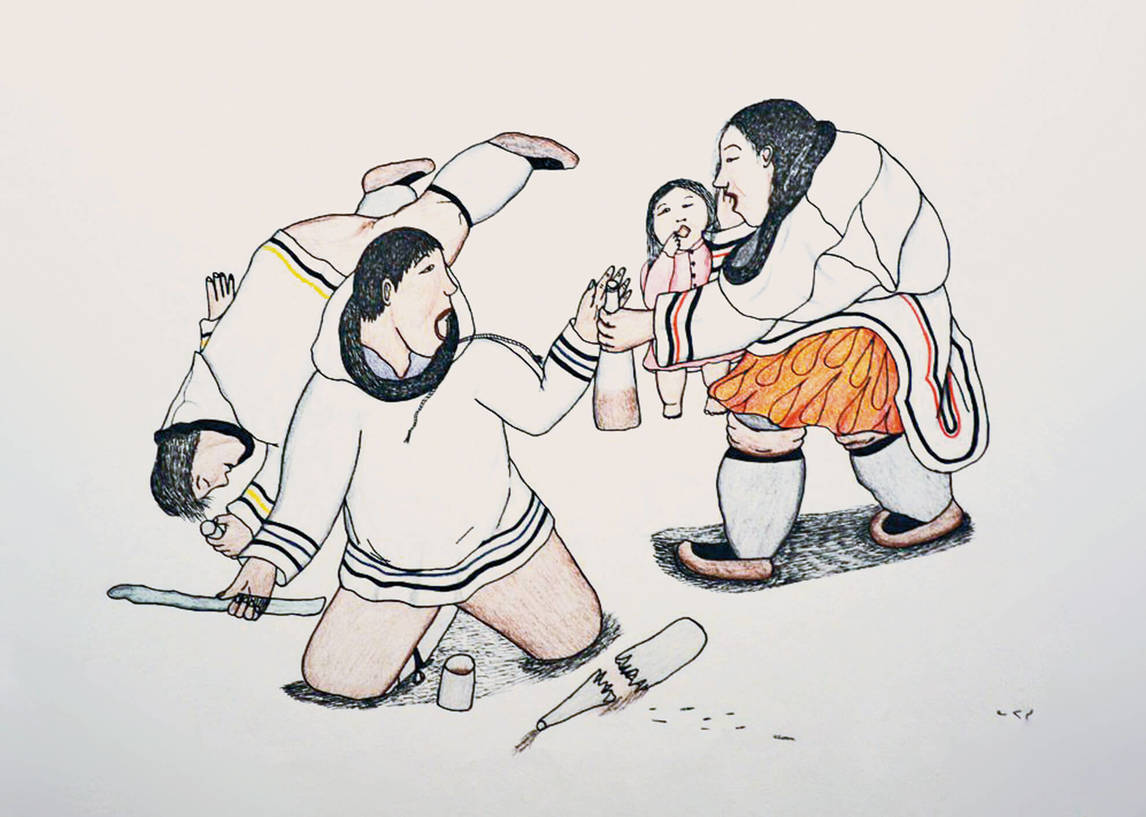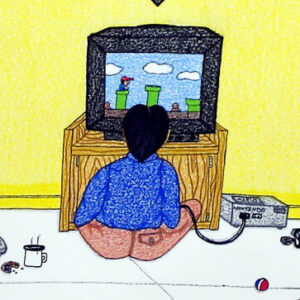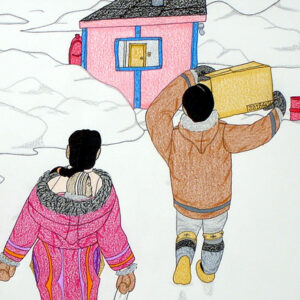Memory of My Life: Breaking Bottles 2001–2

Annie Pootoogook, Memory of My Life: Breaking Bottles, 2001–2
Coloured pencil and ink on paper, 51 x 66 cm
Collection of Stephanie Comer and Rob Craigie
Memory of My Life: Breaking Bottles documents Annie Pootoogook’s growing frustration with alcoholism in her family. The drawing is an exterior scene that shows a young woman breaking bottles on a rock behind a house. A person wearing a parka can be seen to the far left, entering through the side door of the house, but nothing more about this person can be identified. There is an open window through which the viewer sees directly into the home, faced by the opposing interior wall. It is an unsettling artistic device, as it appears to flatten the house and erase any illusion of depth, with the result that the woman behind the house appears to be boxed into a two-dimensional space.

The rawness of a number of Annie’s drawings dealing with difficult subject matter related to violence or substance abuse, including this one, quickly grabbed the attention of Southern audiences, and Annie became almost exclusively known for her brave and original images of the North. Such imagery was not traditional in Inuit art, and therefore Annie’s frank representations of challenging issues facing her community became one of the most discussed and reported-on elements in her work.
Annie eventually admitted that, as in other works done in this style, she had depicted herself: she is the young woman breaking bottles on a rock. She explained that “one time I drew when I broke bottles ‘cause I got tired of drinking people every day. So I had to broke… break their bottles on the rock so they won’t drink tomorrow. I think I did a good job.”
Radical though it is, Memory of My Life: Breaking Bottles was not without precedent. Annie was influenced by the art of her mother, Napachie Pootoogook (1938–2002), who struggled with mental health problems and abuse and was unafraid to show her reality in the drawings she produced in the last years of her life. Untitled (Alcohol), 1993–94, comments on the devastating effects of alcohol. Her work caused a strong reaction when it was exhibited in 1999 in Three Women, Three Generations: Drawings by Pitseolak Ashoona, Napatchie [sic] Pootoogook and Shuvinai Ashoona at the McMichael Canadian Art Collection, Kleinburg, Ontario, and the Winnipeg Art Gallery. Napachie’s late drawings no doubt made their mark on the impressionable Annie. She, like her mother, drew from personal experience.
This drawing was purchased by contemporary artist Rob Craigie of Chicago and his wife Stephanie Comer, who, along with a few other collectors, recognized the importance of Annie’s work early on and acquired significant holdings. Their collection is available for public viewing on their website, Expanding Inuit.

 About the Author
About the Author
 More Online Art Books
More Online Art Books
 Acknowledgements
Acknowledgements